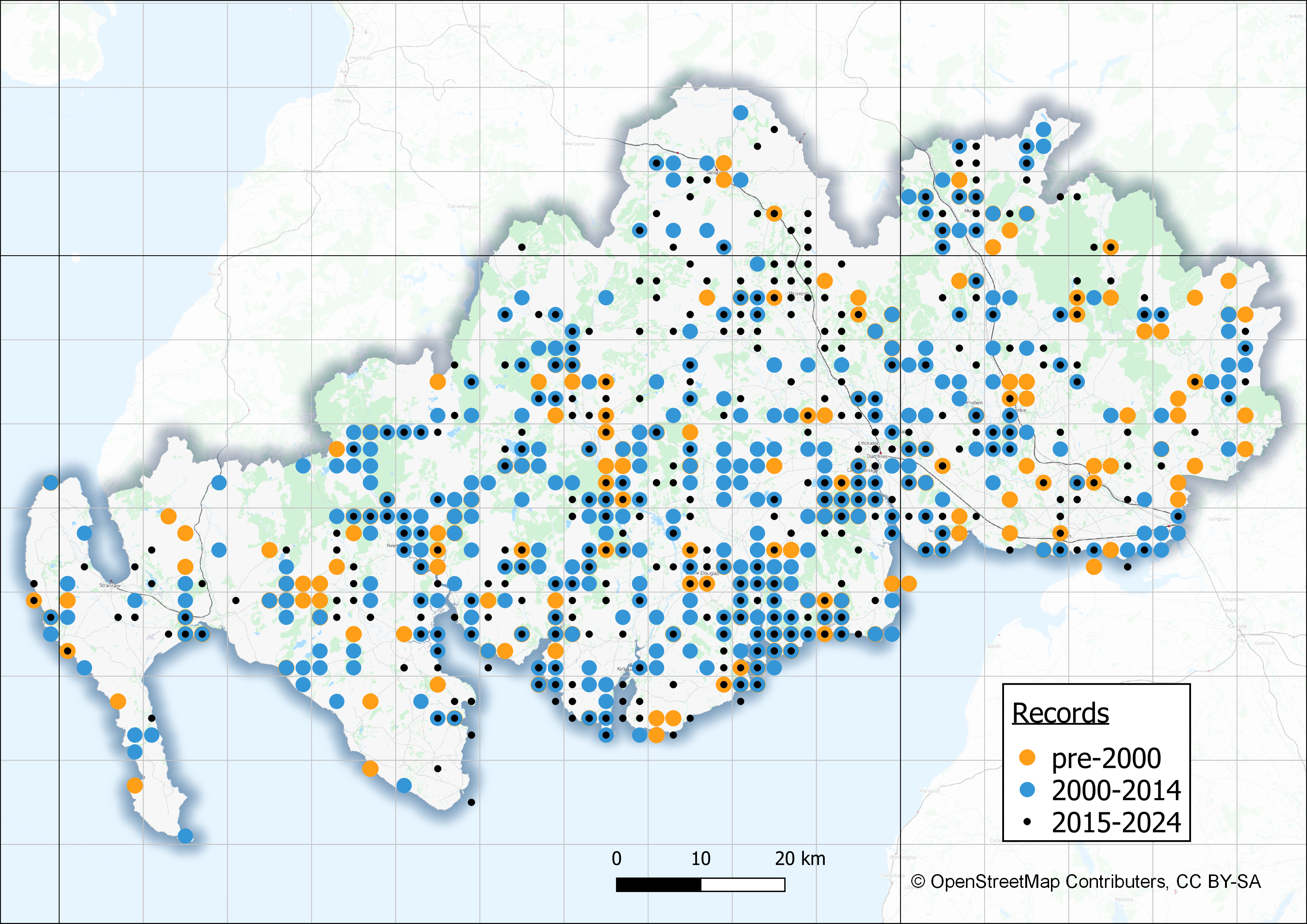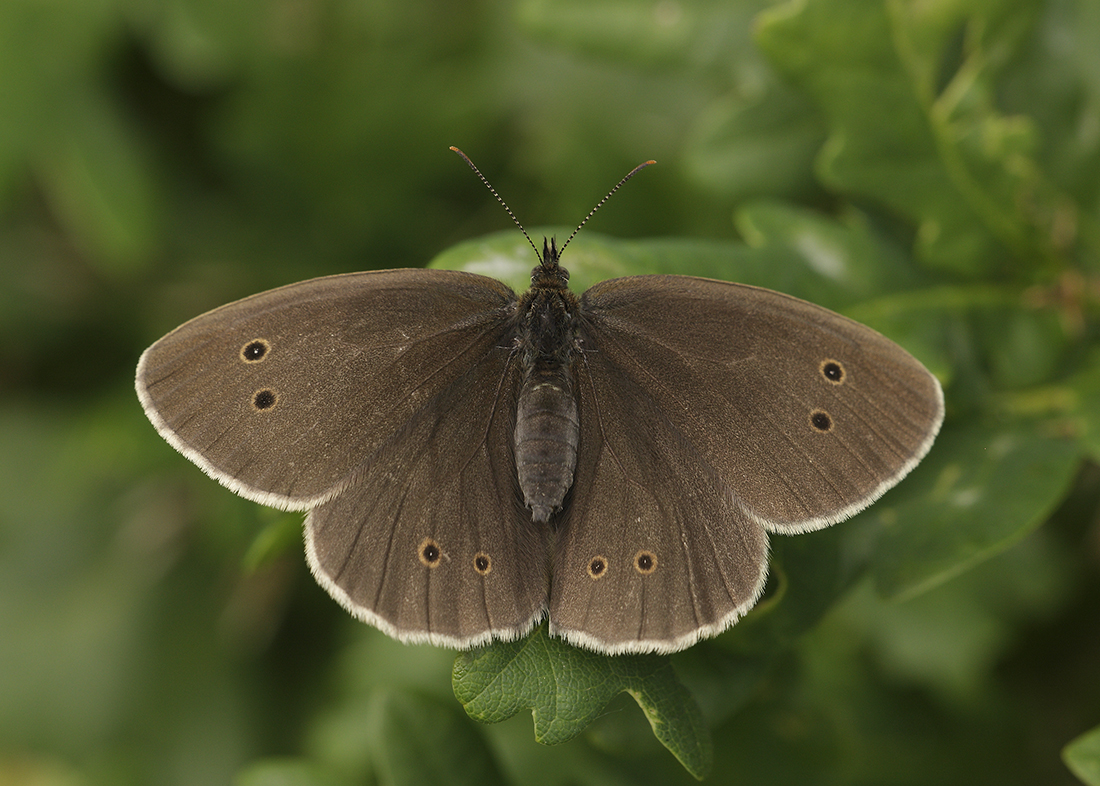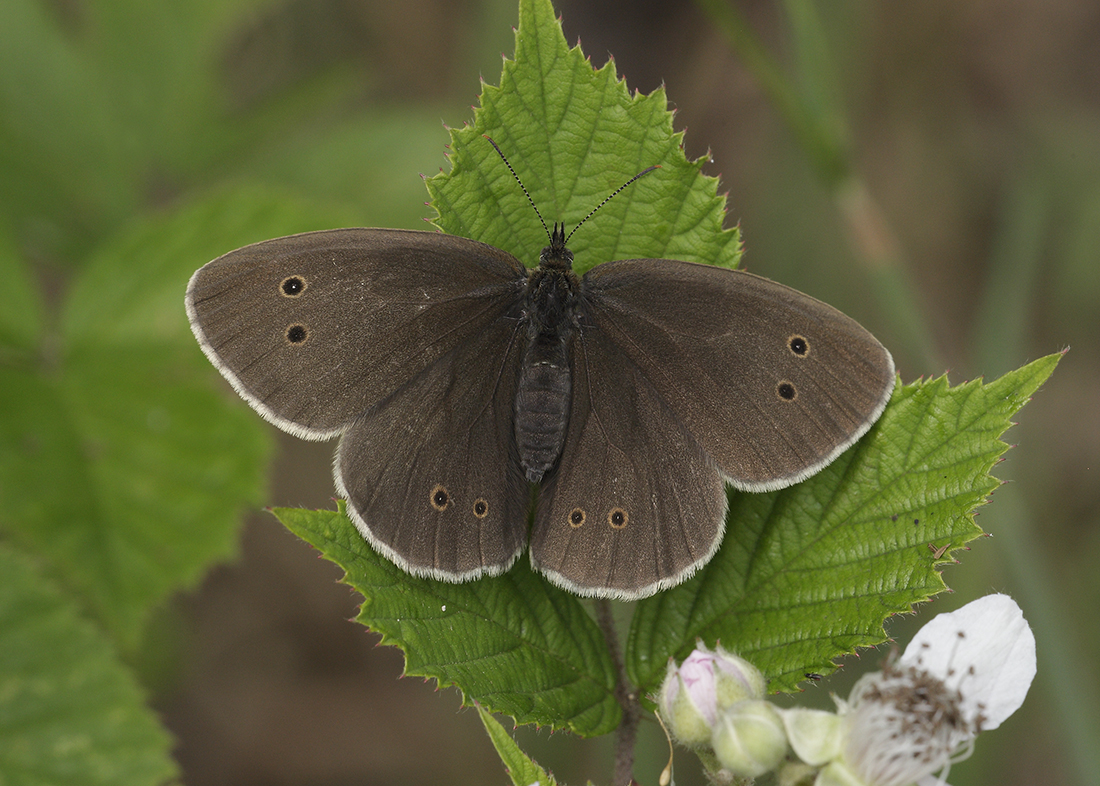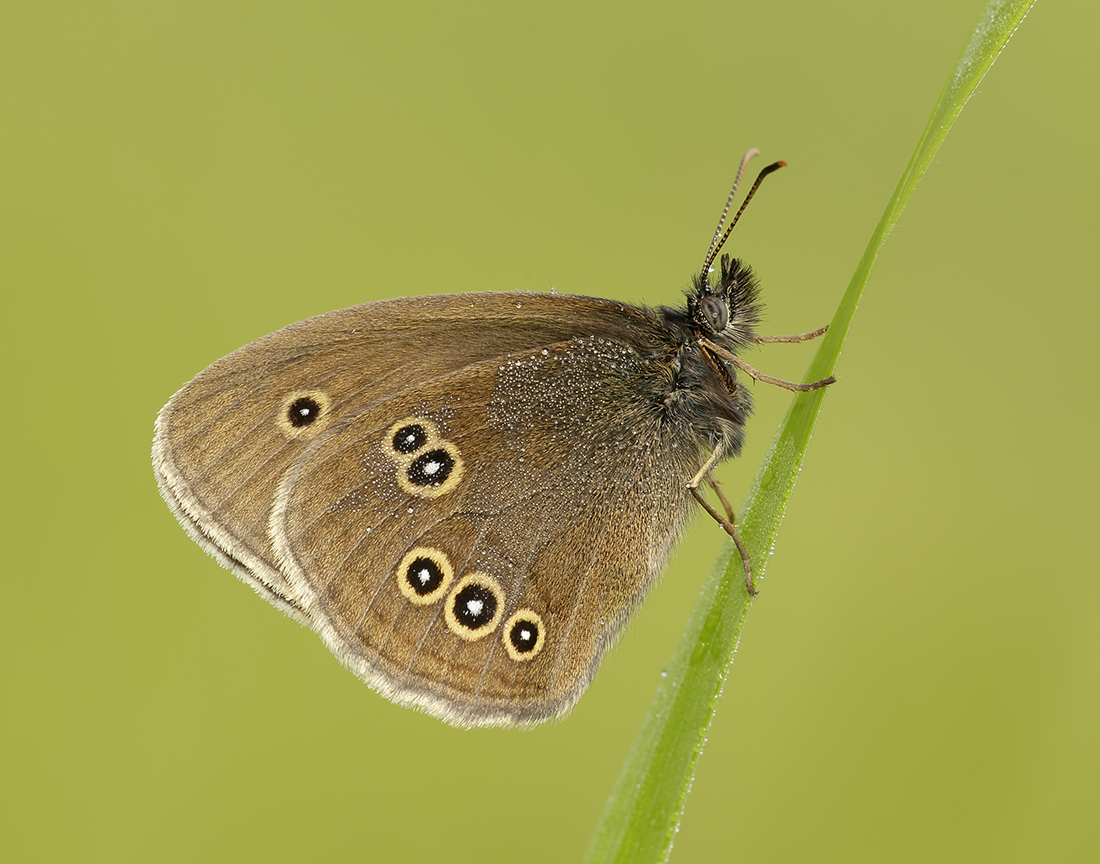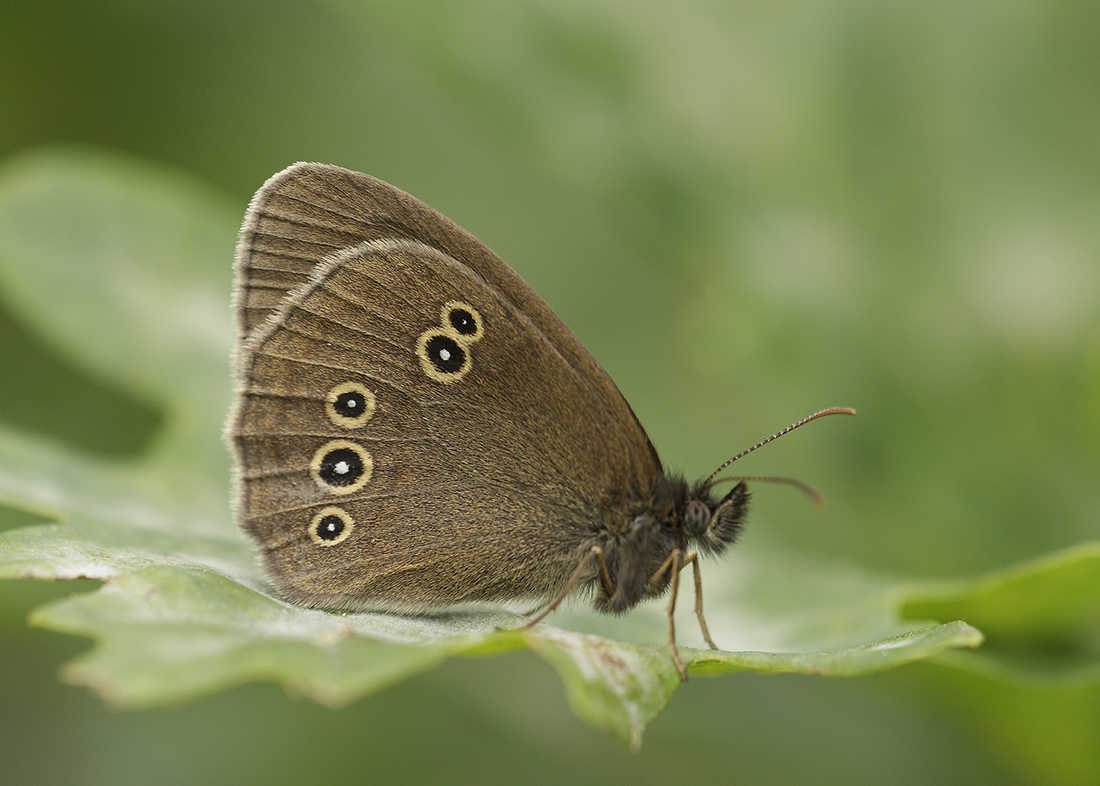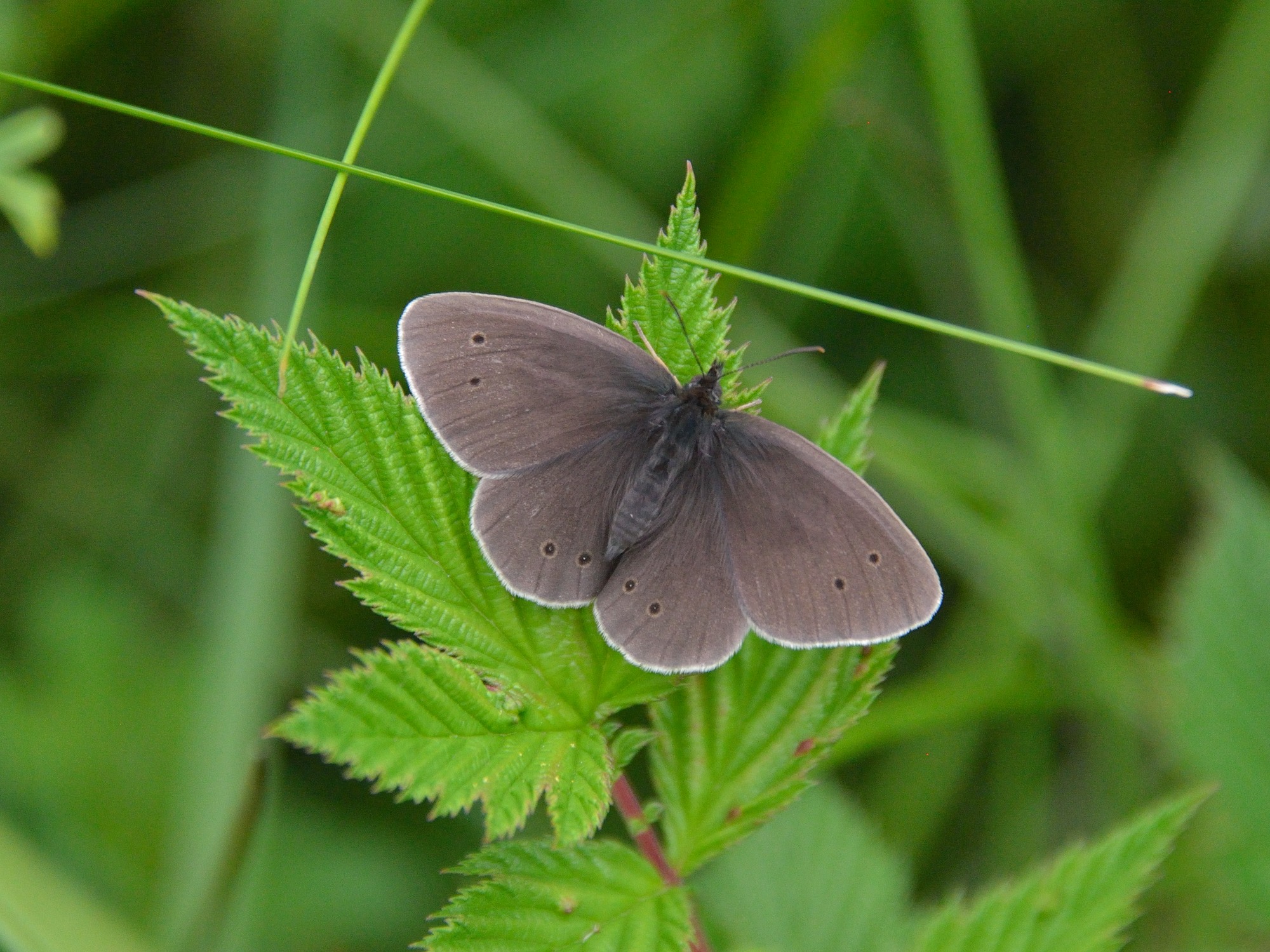Although the Ringlet was present over most of Scotland in the 19th century, by the turn of the 20th century the butterfly had become absent from a good part of its former range. Since the 1970s the Ringlet has re-colonised the south of Scotland and spread much further north. In many places the Ringlet is now more abundant than the Meadow Brown. In 2018, for example, more than five times as many Ringlets were seen as Meadow Browns on the Mabie Forest butterfly transect.
Identification
The Ringlet bobs along in a leisurely manner, cruising over tall, lush grassland, even in drizzle on dull, dreich days. The newly emerged butterfly has silky chocolate-coloured wings bordered with white fringes, but soon the fringes disappear and the ground colour fades to a greyish-brown. It often flies with the Meadow Brown and Scotch Argus, and towards the end of the summer worn individuals can be difficult to tell apart.
Life cycle & flight period
The butterfly has one generation a year, and can be seen on the wing from early June to early September, peaking between late June and end July. Overwinters as a caterpillar.
Larval foodplant
The caterpillars feed primarily on tall, broad-leaved grasses, such as Cock’s-foot and Tufted Hair-grass.
Habitats
The Ringlet favours tall, grassland, especially in damper situations, and often where there is shelter and some shade, such as woodland rides and edges. It can also breed in urban greenspaces including gardens, roadside verges and field margins, but in very warm weather may retreat to shadier places.

